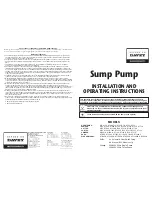
13
ScRaPiNG
Typical application: Scraping off old varnish or adhesives, removing
glued carpeting, e. g. on stairs or other small to medium-sized
surfaces.
Select medium / high oscillation frequency (for variable speed
models).
leD liGHt (1)
To turn on the light simply press the on/off switch. When you release
the on/off switch, the light will be off.
LED lighting increases visibility-great for dark or enclosed area. LED is
also a battery capacity indicator. It will flash when power gets low.
teMPeRatURe DePeNDeNt oveRloaD PRotectioN
When using as intended for, the power tool cannot be subject
to overload. When the load is too high or the allowable battery
temperature of 75°C is exceeded, the electronic control switches off
the power tool until the temperature is in the optimum temperature
range again.
PRotectioN aGaiNSt DeeP DiScHaRGiNG
The Li-ion battery is protected against deep discharging by the
“Discharging Protection System”. When the battery is empty, the
machine is switched off by means of a protective circuit: The inserted
tool no longer rotates.
DiSPoSal of aN eXHaUSteD BatteRy Pack
To preserve natural resources, please recycle or dispose of
the battery pack properly. This battery pack contains Lithium
batteries. Consult your local waste authority for information
10
11
12
13
14
regarding available recycling and/or disposal options. Discharge
your battery pack by operating your tool, then remove the battery
pack from the tool housing and cover the battery pack connections
with heavy-duty adhesive tape to prevent short circuit and energy
discharge. Do not attempt to open or remove any of the components.
Working hints for your tool
If your power tool becomes too hot, especially when used at low
speed, set the speed to maximum and run it with no load for 2-3
minutes to cool the motor. Avoid prolonged usage at very low
speeds. Always keep the blade sharp.
Always ensure the workpiece is firmly held or clamped to prevent
movement.
Any movement of the material may affect the quality of the cutting or
sanding finish.
Start your tool before working and turn it off only after you stop
working.
Do not start sanding without having the sandpaper fitted.
Do not allow the sandpaper to wear away , it will damage the sanding
pad. The guarantee does not cover sanding pad wear and tear.
Use coarse grit paper to sand rough surfaces, medium grit for
smooth surfaces and fine grit for finishing surfaces. If necessary, first
make a test run on scrap material.
Excessive force will reduce the working efficiency and cause motor
overload. Replacing the accessory regularly will maintain optimum
working efficiency.


































